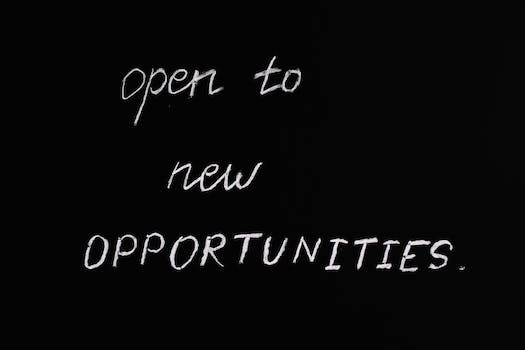How To Start A Business Presentation
“From idea to reality: A step-by-step guide to launching your own business.”
Introduction
Introduction: Starting a business can be an exciting and rewarding experience, but it can also be overwhelming and challenging. A well-prepared business presentation can help you communicate your ideas and plans effectively to potential investors, partners, and customers. In this guide, we will discuss the key elements of a successful business presentation and provide tips on how to create a compelling and persuasive pitch. Whether you are a first-time entrepreneur or an experienced business owner, this guide will help you deliver a powerful presentation that can help you achieve your goals.
Creating a Compelling Business Plan
Starting a business can be an exciting and daunting task. One of the most important steps in starting a business is creating a compelling business plan. A business plan is a document that outlines your business goals, strategies, and financial projections. It is a roadmap that guides you through the process of starting and growing your business. In this article, we will discuss how to start a business presentation by creating a compelling business plan.
The first step in creating a compelling business plan is to define your business idea. What problem are you solving? Who is your target market? What is your unique selling proposition? These are some of the questions you need to answer when defining your business idea. Your business idea should be clear, concise, and compelling. It should be something that you are passionate about and that has the potential to make a difference in the world.
Once you have defined your business idea, the next step is to conduct market research. Market research helps you understand your target market, competition, and industry trends. It also helps you identify opportunities and challenges in the market. You can conduct market research by using online resources, surveys, focus groups, and interviews. The information you gather from market research will help you refine your business idea and develop a marketing strategy.
After conducting market research, the next step is to develop a marketing strategy. A marketing strategy is a plan that outlines how you will promote your business, attract customers, and generate revenue. Your marketing strategy should include a mix of online and offline marketing tactics, such as social media marketing, email marketing, content marketing, and advertising. Your marketing strategy should also be aligned with your business goals and target market.
Once you have developed a marketing strategy, the next step is to create a financial plan. A financial plan is a document that outlines your business’s financial projections, including revenue, expenses, and cash flow. Your financial plan should include a detailed budget, sales forecast, and profit and loss statement. It should also include a break-even analysis and a cash flow projection. Your financial plan should be realistic and based on accurate data.
After creating a financial plan, the next step is to develop an operational plan. An operational plan is a document that outlines how you will run your business on a day-to-day basis. It includes details such as your business structure, staffing plan, inventory management, and customer service policies. Your operational plan should be detailed and comprehensive, and it should be aligned with your business goals and financial projections.
Once you have developed a business plan, the next step is to create a business presentation. A business presentation is a visual representation of your business plan. It should be clear, concise, and engaging. Your business presentation should include an executive summary, market analysis, marketing strategy, financial plan, and operational plan. It should also include visuals such as charts, graphs, and images to help illustrate your points.
In conclusion, starting a business requires careful planning and preparation. Creating a compelling business plan is an essential step in starting and growing a successful business. By defining your business idea, conducting market research, developing a marketing strategy, creating a financial plan, and developing an operational plan, you can create a roadmap that guides you through the process of starting and growing your business. A business presentation is a visual representation of your business plan that can help you communicate your ideas and attract investors and customers. With these tips, you can start a business presentation that is compelling, engaging, and effective.
Identifying Your Target Market

Starting a business presentation can be a daunting task, especially if you are new to the world of entrepreneurship. However, with the right approach and preparation, you can create a compelling presentation that will capture the attention of your audience and help you achieve your business goals. In this article, we will discuss the first step in creating a successful business presentation: identifying your target market.
Identifying your target market is crucial to the success of your business presentation. Your target market is the group of people who are most likely to be interested in your product or service. By understanding their needs, preferences, and behaviors, you can tailor your presentation to meet their specific needs and increase your chances of success.
The first step in identifying your target market is to conduct market research. This involves gathering information about your potential customers, such as their age, gender, income, education level, and geographic location. You can use a variety of methods to gather this information, including surveys, focus groups, and online research.
Once you have gathered this information, you can use it to create a customer profile. A customer profile is a detailed description of your ideal customer, including their demographics, interests, and buying habits. This profile will help you understand your target market better and create a presentation that resonates with them.
When creating your business presentation, it is important to keep your target market in mind. Your presentation should be tailored to their needs and preferences, and should address their pain points and concerns. For example, if your target market is young professionals, you may want to focus on the convenience and time-saving benefits of your product or service.
Another important factor to consider when identifying your target market is competition. You should research your competitors to understand their strengths and weaknesses, and to identify any gaps in the market that you can fill. By understanding your competition, you can position your product or service in a way that sets it apart from the competition and appeals to your target market.
In addition to understanding your target market and competition, it is also important to consider the overall market trends and conditions. This includes factors such as economic conditions, technological advancements, and changes in consumer behavior. By staying up-to-date on these trends, you can adjust your presentation to meet the changing needs of your target market and stay ahead of the competition.
In conclusion, identifying your target market is the first step in creating a successful business presentation. By conducting market research, creating a customer profile, and understanding your competition and market trends, you can create a presentation that resonates with your target market and helps you achieve your business goals. Remember to keep your target market in mind throughout the presentation process, and to tailor your presentation to meet their specific needs and preferences. With the right approach and preparation, you can create a compelling presentation that captures the attention of your audience and helps you succeed in the world of entrepreneurship.
Developing a Marketing Strategy
Starting a business presentation can be a daunting task, especially if you are new to the world of entrepreneurship. However, with the right approach and a solid marketing strategy, you can create a compelling presentation that will capture the attention of your audience and help you achieve your business goals.
The first step in developing a marketing strategy for your business presentation is to identify your target audience. Who are you trying to reach with your presentation? What are their needs and interests? Once you have a clear understanding of your audience, you can tailor your message and presentation style to meet their needs.
Next, you need to define your unique selling proposition (USP). What sets your business apart from the competition? What value do you offer that others do not? Your USP should be the foundation of your marketing strategy and should be communicated clearly and consistently throughout your presentation.
Once you have identified your target audience and USP, it’s time to develop your messaging. Your messaging should be concise, clear, and compelling. It should communicate the benefits of your product or service and address any objections or concerns your audience may have.
In addition to your messaging, you should also consider the visual elements of your presentation. A well-designed presentation can help you communicate your message more effectively and can make a lasting impression on your audience. Consider using images, charts, and graphs to illustrate your points and break up the text.
Another important aspect of developing a marketing strategy for your business presentation is to consider your distribution channels. How will you get your presentation in front of your target audience? Will you be presenting in person, online, or through a third-party platform? Each distribution channel has its own unique advantages and challenges, so it’s important to choose the one that best fits your business goals and resources.
Finally, you should consider the timing and frequency of your presentation. How often will you be presenting? Will you be presenting at specific events or on an ongoing basis? Timing and frequency can have a significant impact on the success of your presentation, so it’s important to plan accordingly.
In conclusion, developing a marketing strategy for your business presentation is a critical step in achieving your business goals. By identifying your target audience, defining your USP, developing your messaging, considering your visual elements and distribution channels, and planning your timing and frequency, you can create a compelling presentation that will capture the attention of your audience and help you achieve success. With the right approach and a solid marketing strategy, you can take your business to the next level and achieve your dreams of entrepreneurship.
Building a Strong Brand Identity
Starting a business presentation can be a daunting task, especially if you are new to the world of entrepreneurship. However, with the right approach, you can create a strong brand identity that will help you stand out from the competition and attract customers. In this article, we will discuss some tips on how to build a strong brand identity for your business presentation.
The first step in building a strong brand identity is to define your target audience. Who are you trying to reach with your business presentation? What are their needs and wants? Once you have a clear understanding of your target audience, you can tailor your message and branding to appeal to them.
Next, you need to develop a unique value proposition. What sets your business apart from the competition? What do you offer that no one else does? Your value proposition should be clear, concise, and easy to understand. It should also be something that resonates with your target audience.
Once you have defined your target audience and value proposition, it’s time to start thinking about your branding. Your branding should be consistent across all of your marketing materials, including your business presentation. This includes your logo, color scheme, and messaging.
When it comes to your logo, it should be simple, memorable, and reflective of your brand. Your color scheme should also be consistent with your brand identity. For example, if you are a health and wellness company, you may want to use calming colors like blue and green. If you are a tech company, you may want to use bold, bright colors like red and orange.
Your messaging should also be consistent with your brand identity. This includes the language you use, the tone of your messaging, and the overall message you are trying to convey. Your messaging should be clear, concise, and easy to understand.
Another important aspect of building a strong brand identity is to establish a strong online presence. This includes having a website, social media accounts, and other online marketing materials. Your website should be easy to navigate, visually appealing, and reflective of your brand identity. Your social media accounts should also be consistent with your branding and messaging.
Finally, it’s important to be consistent with your branding and messaging across all of your marketing materials. This includes your business cards, brochures, and other promotional materials. By being consistent, you will create a strong brand identity that will help you stand out from the competition and attract customers.
In conclusion, building a strong brand identity is essential for any business presentation. By defining your target audience, developing a unique value proposition, and establishing a consistent branding and messaging strategy, you can create a strong brand identity that will help you stand out from the competition and attract customers. With these tips in mind, you can start building a strong brand identity for your business presentation today.
Securing Funding and Investment Opportunities
Starting a business can be an exciting and challenging endeavor. One of the most important aspects of starting a business is securing funding and investment opportunities. In this article, we will discuss some tips on how to start a business presentation that will help you secure the funding and investment opportunities you need to get your business off the ground.
First and foremost, it is important to understand your audience. When preparing your business presentation, you should consider who your audience is and what their interests and needs are. This will help you tailor your presentation to their specific needs and interests, making it more likely that they will be interested in investing in your business.
Once you have a clear understanding of your audience, it is time to start preparing your presentation. Your presentation should be clear, concise, and engaging. You should start by introducing yourself and your business, and then move on to discussing the problem your business solves and how it solves it.
Next, you should discuss your target market and how you plan to reach them. This should include information on your marketing strategy, as well as any partnerships or collaborations you have in place to help you reach your target market.
After discussing your target market, it is time to talk about your business model and revenue streams. This should include information on how you plan to make money, as well as any potential risks or challenges you may face.
Once you have discussed your business model and revenue streams, it is time to talk about your team. This should include information on your key team members, their experience and qualifications, and how they will contribute to the success of your business.
Finally, you should wrap up your presentation by discussing your financial projections and funding needs. This should include information on how much money you need to get your business off the ground, as well as any potential sources of funding or investment opportunities.
When preparing your business presentation, it is important to keep in mind that investors are looking for businesses that are not only profitable, but also have a clear and compelling vision for the future. Your presentation should demonstrate that you have a solid understanding of your market, a clear plan for growth, and a team that is capable of executing that plan.
In addition to preparing a strong business presentation, it is also important to network and build relationships with potential investors. This can include attending networking events, reaching out to investors directly, and leveraging your existing network to make introductions.
Overall, starting a business can be a challenging but rewarding experience. By following these tips on how to start a business presentation, you can increase your chances of securing the funding and investment opportunities you need to turn your vision into a reality.
Conclusion
Conclusion: Starting a business presentation is a crucial step towards the success of any business venture. It requires careful planning, research, and preparation to ensure that the presentation effectively communicates the business idea, goals, and strategies to potential investors, partners, and customers. By following the tips and guidelines discussed in this article, entrepreneurs can create a compelling and engaging business presentation that captures the attention of their audience and inspires them to take action.




